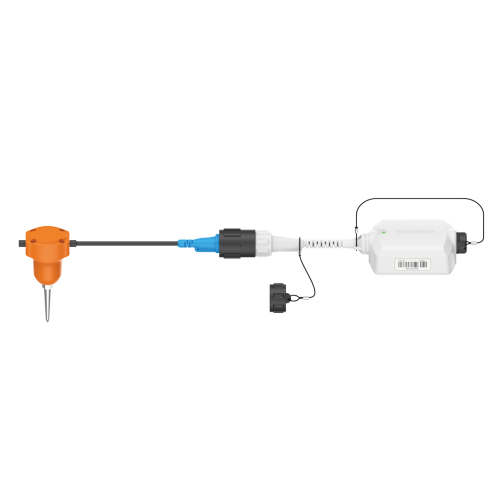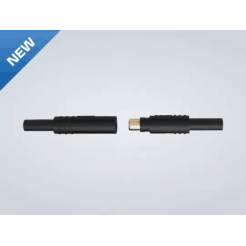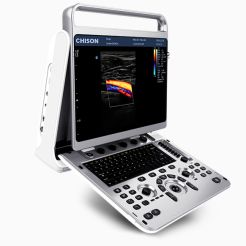High Resolution Seismic Data Logger 1C
Our node seismograph, featuring the innovative Smartsolo geophone, offers unparalleled data collection capabilities. Experience seamless integration, enhanced mobility, and exceptional accuracy in seismic measurements. Uncover hidden subsurface information and gain valuable insights with our cutting-edge seismic node solutions.
Product Description
Tags:
Seismic Node, Node Seismograph, Smartsolo Geophone, High-Resolution Seismic Data Logger, Ip68 Seismic Sensors, Seismic Monitoring, Seismic Recorder, Land Seismic Acquisition, Earthquake Measuring Device
High Resolution Seismic Data Logger 1C is the ultimate solution for your seismic data collection needs. Designed by SmartSolo Inc., this cutting-edge device combines the functionality of a seismic node, node seismograph, and Smartsolo geophone, providing unparalleled performance and accuracy in the field.
With its advanced IP68 seismic sensors, the High Resolution Seismic Data Logger 1C ensures reliable data capture even in the harshest environments. Whether you're conducting seismic surveys in remote locations or monitoring ground vibrations in urban areas, this device delivers precise and high-resolution seismic data, enabling you to make informed decisions with confidence.
What sets the High Resolution Seismic Data Logger 1C apart is its cost-effective and cheap seismic data storage capabilities. Equipped with state-of-the-art data storage technology, this logger allows for efficient data management and storage, eliminating the need for expensive external storage devices. Say goodbye to cumbersome and costly storage solutions, and streamline your seismic data collection process with ease.
The High Resolution Seismic Data Logger 1C boasts a user-friendly interface and intuitive controls, making it accessible to both seasoned professionals and newcomers to the field. Its compact and rugged design ensures portability and durability, allowing you to deploy the device in any terrain or weather condition.
Whether you're conducting seismic research, environmental monitoring, or geological exploration, the High Resolution Seismic Data Logger 1C is the perfect companion for your data collection endeavors. With its unmatched performance, reliable sensors, and cost-effective data storage, this logger empowers you to unlock valuable insights from the Earth's subsurface.
Upgrade your seismic data collection process today with the High Resolution Seismic Data Logger 1C and experience the future of seismic technology. SmartSolo Inc. is proud to bring you this innovative solution that combines efficiency, affordability, and accuracy for all your seismic data needs.
IAU-19 Features
IAU-19 is a new generation smart seismic acquisition node used to connect with external land and marsh geophone or hydrophone. It has wireless QC functionality to enable a field deployment tool or mobile phone to check for good status. This includes recording parameters, battery voltage, temperature, remaining data storage, GPS position and quality, connected sensor status and more.
Main Features
Wireless QC
including ambient noise
and real-time signal check
16GB internal memory
Can use land geophone or
marsh geophone/hydrophone
Built-in high capacity
rechargeable battery
External sensor
leakage test capability
Fast data download speed
IAU 2 Slot All-In-One
IAU AlO-2 is a portable device specially designed for IAU-19 intelligent seismic acquisition units with 2 slots for battery charging, data download, and testing.
Size(LxWxH):
247*204*163 mm
Weight:
3.8 kg
Layout:
2 slots (One for Charge; One for Download/Test)
Status Indication:
USB 3.0*1, DC Power*1
Connection Type:
LED on Adapter (Indicate Charge)
LED on Panel (indicate Download)
Power Supply:
8.4V, 2A
Working Humidity:
20%~90%RH, No condensing
IAU 16 Slot All-In-One
The IAU AlO-16 isa portable device specifically designed for the IAU-19 intelligent acquisi-tion units, with 16 slots for battery charging, data download, and testing.
Size(LxWxH):
650*500*366 mm
Weight:
28.5 kg
Layout:
16
Status Indication:
LED
LED:
2 LEDs/slot
(Left light: Download/Test; Right light: Charge)
Connection Type:
USB 3.0
Power Supply:
100-240V AC, 50/60Hz
Max Consumption:
640W
Working Humidity:
20%~90%RH, No condensing
IAU 48 Slot All-In-One Rack
The IAU 48 Slot All-In-One Rack (IAU AlO-48) is a device specifically designed for the IAU-19 Intelligent Acquisition Unit to perform battery charging, data download, and testing.
Size(LxWxH):
650*320*1810 mm
Weight:
143 kg
Layout:
12 rows, 4 slots on each row
Status Indication:
LED
LED:
2 LEDs/slot
(Left light: Download/Test; Right light: Charge)
Connection Type:
3*USB 3.0, 3*USB 2.0
Power Supply:
100-240V AC, 50/60Hz
Max Consumption:
1920W
Working Humidity:
20%~90%RH, No condensing
IAU Battery Charging Rack
The IAU BCR-48 is a charging device designed for simultaneously charging 48 of the IAU-19.
Size(LxWxH):
650*320*1810 mm
Weight:
140 kg
Layout:
12 rowS, 4 slots on each row
Status Indication:
LED
Power Supply:
100-240V AC, 50/60Hz
Max Consumption:
1920W
Working Humidity:
20%~90%RH, No condensing
Specifications
Size and Weight
- 132mm(L)×97mm(W)×50mm(H)(without external DCK pluh)
- 0.8kg
Data Storage
- 16GB
Recharge Time
- <3 hours
Operating Life@25°C
- 25 days Continuous@ 2ms
- 50 days Segmented (12hours ON/12hours SLEEP) @ 2ms
Communication
- Bluetooth
External Power supply
- -
Physical Specs
- Seismic data channel(s) : 1
- ADC resolution : 32 bits
- Sample intervals : 0.25, 0.5, 1, 2, 4 milliseconds
- Preamplifier gain : 0dB to 36 dB in 6 dB steps
- Anti-alias filter : 206.5 Hz @ 2ms (82.6% of Nyquist)
Selectable - Linear Phase or Minimum Phase - DC blocking filter : 1Hz to 10Hz, 1Hz increments or DC Removed
- Operating temperature : -40°C ~ +70°C
- Waterproof : IP68
- Charging Temperature Range : +3°C ~ +45°C
Channel Performance
- Maximum Input Signal : ±2.5Vpeak @ Gain 0dB
- Equivalent Input Noise : 0.18μV @ 2ms Gain 18dB
- Total Harmonic Distortion : <0.0002% @ Gain 0dB
- Common Mode Rejection : ≥100dB
- Gain Accuracy : <0.5%
- GPS Time Standard : 1ppm
- Timing Accuracy : ±10μs, GPS Disciplined
- System Dynamic Range : 145dB
- Frequency Response : 0 ~ 1652Hz
- Remark : All parameters are specified at 2ms sample interval, 31.25 Hz, 25°C, unless otherwise indicated
FAQ about Smartsolo Geophone
1: Geophones Definition
Geophones are devices used in the field of geophysics to detect and measure ground vibrations. They are essential tools in seismic surveys and other geophysical studies that involve the measurement of seismic waves.
2: How Do Geophones Work?
Geophone Working Principle: Geophones work based on the principle of electromagnetic induction. They consist of a coil of wire and a magnet suspended within a casing. When a seismic wave passes through the ground, it causes the ground to vibrate. These vibrations induce relative motion between the coil and magnet within the geophone, generating an electrical voltage proportional to the ground vibrations. This voltage signal is then recorded and analyzed to extract valuable information about the subsurface geology.
3: What Is Seismic Data Acquisition
Seismic data acquisition is the process of collecting data about the Earth's subsurface using seismic techniques. It typically involves deploying geophones or other seismic sensors in an array or network across a survey area. These sensors detect and record ground vibrations generated by seismic sources, such as vibrating trucks or explosive charges. The recorded data, known as seismic data, is then processed and analyzed to create detailed images and models of the subsurface. Seismic data acquisition plays a crucial role in various applications, including oil and gas exploration, geotechnical investigations, and earthquake studies.
4:What are the different types of geophones?
Geophones come in various types, each designed for specific seismic survey requirements. Common types include vertical-component geophones, three-component geophones, and rotational geophones. Vertical-component geophones measure ground motion in the vertical direction, while three-component geophones record motion in all three spatial directions (vertical, north-south, and east-west). Rotational geophones are used to detect rotational ground motions. The choice of geophone type depends on the specific objectives and parameters of the seismic survey.
5:What are geophones used for?
Geophones are essential tools in the field of geophysics and seismic exploration. They are used to detect and measure ground vibrations caused by seismic waves. Geophones play a crucial role in seismic surveys, where they are deployed in arrays or networks to capture seismic data for subsurface imaging and characterization. Geophysicists use geophones to investigate subsurface structures, map geological formations, locate hydrocarbon reservoirs, monitor induced seismicity, assess earthquake hazards, and conduct various other geophysical studies. Geophones provide valuable data that helps in understanding the Earth's subsurface properties and processes.






